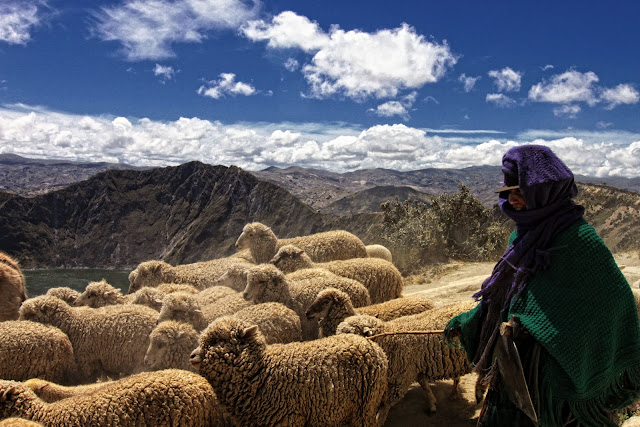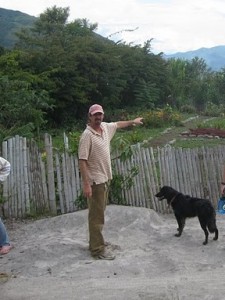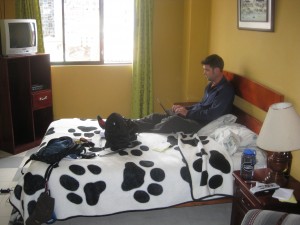It’s been nearly a week since our last post but we have a pretty good reason for the delay as we were officially off the grid. Last Tuesday, Ted and I met up with a tourism industry colleague/friend of Ted’s named Peter that Ted had met with a couple of times in Boulder. Peter is American however, he now lives in Ecuador and has for the past ten years. More about Peter and his work in a future post, but he was our connection for where we spent the last week living with a family and learning Spanish.
 We met up with Peter in Otavalo, Ecuador which is a fairly large town (~40,000 people) known for its weekly Saturday market and a predominantly indigenous population. We then took a very crowded, yet beautiful and entertaining 2.5 hour bus ride along a dirt road (more about the bus rides in a future post as well!) west into the mountains to a community named Pucara.
We met up with Peter in Otavalo, Ecuador which is a fairly large town (~40,000 people) known for its weekly Saturday market and a predominantly indigenous population. We then took a very crowded, yet beautiful and entertaining 2.5 hour bus ride along a dirt road (more about the bus rides in a future post as well!) west into the mountains to a community named Pucara.
Pucara is a gorgeous little community nestled in the lush Andes mountains, accessed only by dirt road and 5 daily buses. It is one of those places that you drive by and wonder to yourself, “What do people do here?” Well, we were about to find out.
After a delicious lunch prepared for us by the shop-owner of one of the two shops in town, Peter introduced to our “sisters and brothers” for the week. Anita is in early 20s and the mother to a beautiful little 10-month old boy named Chris. Andres is her 10-year old brother and Maria is their 6-year old sister. The family lived about a 20 minute walk from ‘town’. Though there were certainly many awkward silences on that initial walk home, we, or Ted rather, was able to break the ice and make conversation. Once at home we met another brother named Victor, who is 23, and the mother/grandmother of the home named Celia. There is also another sister that is 18 but she is away at university several hours away. The family did not speak any English and I am a better listener to Spanish than I am a speaker, so the majority of the responsibility fell on Ted’s shoulders to communicate.
Andres is her 10-year old brother and Maria is their 6-year old sister. The family lived about a 20 minute walk from ‘town’. Though there were certainly many awkward silences on that initial walk home, we, or Ted rather, was able to break the ice and make conversation. Once at home we met another brother named Victor, who is 23, and the mother/grandmother of the home named Celia. There is also another sister that is 18 but she is away at university several hours away. The family did not speak any English and I am a better listener to Spanish than I am a speaker, so the majority of the responsibility fell on Ted’s shoulders to communicate.
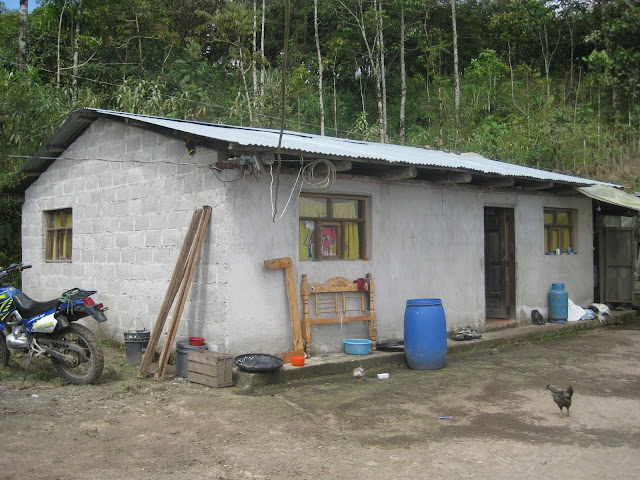 The family’s home was modest to say the least. When you walked in the door, there was a central room that was used as the kitchen, living and dining room. There were then four small bedrooms off the main area. Ted and I shared one of the rooms and the other six people shared the remaining three bedrooms. The bathroom was connected to the house but you had to go outside to access it and it was not enclosed. The dishes and laundry were also done outside the old-fashioned way. They did not have a refrigerator or a telephone and in fact, the only electricity they used for their cooking was a blender to make smoothie juice drinks. The cooking was done using a gas stove and a propane tank.
The family’s home was modest to say the least. When you walked in the door, there was a central room that was used as the kitchen, living and dining room. There were then four small bedrooms off the main area. Ted and I shared one of the rooms and the other six people shared the remaining three bedrooms. The bathroom was connected to the house but you had to go outside to access it and it was not enclosed. The dishes and laundry were also done outside the old-fashioned way. They did not have a refrigerator or a telephone and in fact, the only electricity they used for their cooking was a blender to make smoothie juice drinks. The cooking was done using a gas stove and a propane tank.
There was not room for everyone to eat together so Ted and I sat out in the central room with one or two other people and the remainder crowded into the small bedroom with the tiny T.V. to eat. Though the women (Celia and Anita) were in charge of all the cooking, it was a treat to see that everyone helped out with baby Chris. 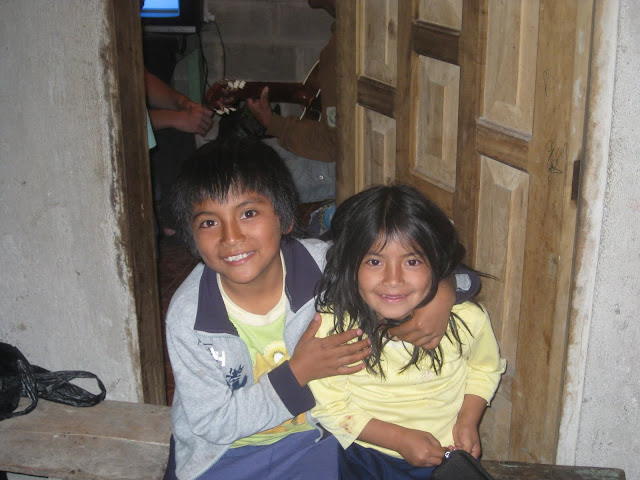 I was impressed to see how helpful and useful the little guys (Andres and Maria) were to their older sister and little nephew. Everyone took turns holding him, entertaining him and making sure he stayed out of trouble.
I was impressed to see how helpful and useful the little guys (Andres and Maria) were to their older sister and little nephew. Everyone took turns holding him, entertaining him and making sure he stayed out of trouble.
Though the language was a barrier for me, I made friends with Maria by painting her fingernails with some polish I’d brought from home and pushing her on the swing. Ted brought a frisbee which was also a popular activity with Maria and Andres and a couple other nights we built a fire and burned everything from grass and sticks to plastic bags and track pants (not our suggestion!).
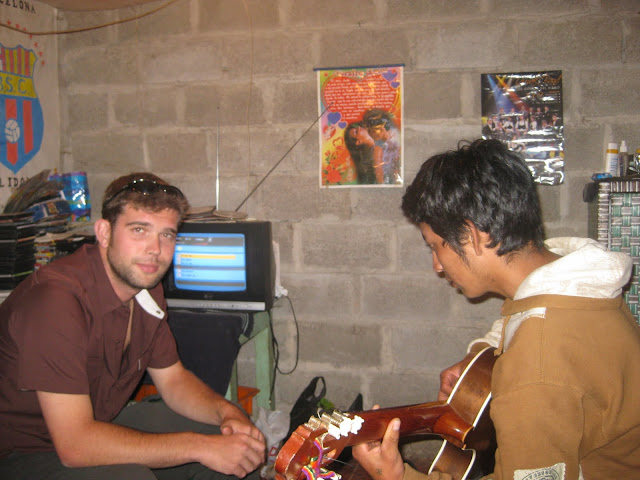 Ted spotted a guitar in Victor’s room the first night we were there and after removing a broken string and tuning it up he learned that Victor didn’t know how to play but that wanted to learn. For the remainder of the week, Ted and Victor sat down in the evening and Ted gave Victor some guitar lessons.
Ted spotted a guitar in Victor’s room the first night we were there and after removing a broken string and tuning it up he learned that Victor didn’t know how to play but that wanted to learn. For the remainder of the week, Ted and Victor sat down in the evening and Ted gave Victor some guitar lessons.
Though it was certainly a treat to live in this family’s home it was not without its challenges for us (no privacy, bugs, tummy trouble) and for them (two giant gringos with very limited Spanish!), I’m sure. I’m thankful for the experience and the insight it provided however, I would by lying if I didn’t tell you that I’m excited to be back in a hostel in Otavalo in a comfortable bed, eating whatever we want whenever we want and going to bed confident that we will not be woken up by multiples roosters outside our window!
